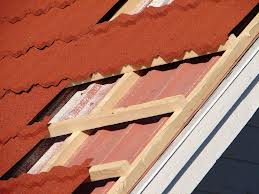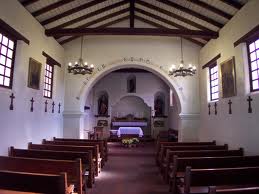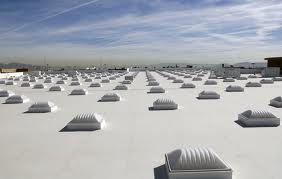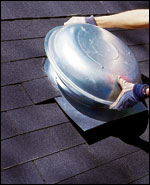Archive for February, 2014
Metal Roofs and Energy Savings

While at the Fort Worth Home and Garden show this last weekend, I met a couple of interesting guys from a local roofing company. Keith and Sam from Classic Superoof “Roofs of Steel” were standing at a booth displaying metal roofing panels.
The product that caught my attention was the Gerard Stone Coated Metal Roofing Systems “Highly UV-reflective granite stone chips which are sealed to the tough zinc aluminum steel substrate”. Like they described “It is essentially as if truck bed liner is sprayed on the steel with stone chips embedded and cured in an oven”.
After talking with them for a while I decided to check them out online to see what energy efficient information is available for their product.
Recycling Options
The panels are made with over 30% recycled steel and the steel itself is also 100% recyclable. As well as the variety of standard colors, they also have energy efficient colors to help reflect the sun’s rays. Since the product is manufactured locally in Texas and California it reduces fuel consumption and greenhouse gas emissions from transportation.
The metal panels are installed over a wooden grid on the deck allowing air flow to pass beneath the roof panels making the cool roof design energy efficient. The Stone Coated Steel system is lightweight enough to be installed directly over existing roofs eliminating the tear off waste that is involved in some jobs.
The roofing system is warrantied for 50 years against hail penetration and 120 mph winds and manufacturing defects. Long lasting roofs also eliminate roof waste and keep roofing materials out of our landfills.
Keith and Sam told me that they bring a machine to the job site that crimps and cuts the panels to the correct specifications for the project saving time and energy by not having to drive back and forth for correct pieces.
Classic Superoofs are located in Hurst Texas. You can get more information about other products and roofing systems they install at www.superoof.com.
Working Safely on your Roof

When doing minor repairs or inspecting your roof for damage, being safe is a priority for you and your local roofer. Slips and falls from rooftops account for hundreds of injuries and many deaths each year.
Personal gear should include boots with good traction, gloves and safety glasses. Some roofing companies provide safety harnesses also for their roofers.
A high quality aluminum or fiberglass extension ladder should be sturdy enough not to bend or shake when you are standing on it. When you raise the ladder to the roof, adjust it so it extends the edge of the roof by approximately 3 feet. When the ladder is positioned where you want it, use stakes and blocking at the base to keep it level and stationary. You can also stabilize a ladder by tying a rope around the ladder and through screw eyes attached to the fascia.
You can rent scaffolding at some home improvement stores
If you are going to be on your roof for an extended period, you may want to work on scaffolding to avoid the up and down and moving of a ladder. The scaffolding should be set on solid ground and leveled with blocks.
If you or your roofer will be working on a very steep roof, roof jacks will give you a small sturdy ledge to stand on. Nail 2 jacks securely into the rafter and then put a board across the 2 jacks. You can place these in several spots on the roof. Be careful when removing them that you don’t do any damage to the roof.
Insulating Ceilings that are Part of your Roof

Commonly ceilings that are also roofs are exposed beams, cathedral ceilings and tongue and groove sheathing that is visible from inside the house. These types of roofs do not have attic areas and commonly lose heat through exposed beams and attractive roof boards.
If you like your decorative ceiling you will need to install the insulation on top of the roof. Have your local roofer tear off the existing roofing material and install a vapor barrier and rigid insulation panels over the roof and sheathing. Nail ½ inch plywood over the insulation and re-roof.
Cathedral ceilings have straight edges that go up to the rafters. The sides slope equally and usually meet in the middle of the room. The ceiling has the same pitch as the outside roof. The roof rafters are usually tongue and groove boards and can be seen from inside the building. Or the inside is finished with sheetrock or plaster and painted. The best way to insulate cathedral ceilings is to create an air tight roof system.
Ventilation and moisture control issues for cathedral ceilings
The traditional moisture control method is installing insulation on the bottom of the cavity and the top area is left for ventilation. A newer method is while building and insulting the cathedral ceiling, insure that very little moisture enters the cavity to begin with, by building the interior tight through caulking and sealing.
Shingling Over an Existing Roof

If you have only one layer of asphalt shingles on your roof you may be able to re-roof over your existing one. Be aware that some shingles installed over an old roof won’t last as long. If there are no leaks and your old roof is in good condition with just one layer of shingles it can be cost effective to put a new layer of shingles over the existing ones and avoid a tear off.
While it is similar to a regular roof job, the starter shingles are different in that they will need to have the top edge trimmed off of the roofing material. Nail the starter shingles along the entire bottom edge of the roof. The starter shingles will be covered with full size shingles and butt successive courses against the bottom of the following courses. The rest of the shingles can be applied in the regular installation process.
Change out old flashing and ridge caps
Apply new flashing where missing or damaged. Old hip and ridge caps will need to be removed and repaired with new shingles. Make sure the nails are long enough to go both layers of shingles and into the roof deck by ¾ inch.
It is always better to tear off old shingles and install a new roof that way you can see any damage to the sheathing underneath. Most building codes allow 2 layers of shingles, any more than that and it becomes a weight issue. You can ask your local roofer what the codes in your area allow.
Economic Report for Black, White and Green Roofs

A study conducted by members of the Lawrence Berkeley National Laboratory (Berkeley Lab) and the Technological University in Singapore produced a report called “Economic Comparison of White, Green, and Black Flat Roofs in the United States”. The report provides an economic comparison of white, black and green or vegetative roofs.
The study analyzed roof costs for a 50 year life span. The researchers found that the most inexpensive green roofs cost approximately $7 more per square foot than black roofs, whereas white roofs save $2 per square foot compared to black roofs.
One of the authors of the report Arthur Rosenfield said “Both white and green roofs do a good job at cooling the building and cooling the air in the city, but white roofs are three times more effective at countering climate change than green roofs.”
The Analysis is Purely Economic
White roofs are cheaper to install and maintain and do have more light reflecting properties. Also white roofs can be installed by your local roofer and use traditional roofing materials, whereas green roofs may involve structural analysis, special liners and landscape designers. Green roofs reduce energy costs, help control storm water runoff and create habitats for local insects, birds and small animals.
The authors of the report recognized the limitations of the analysis such as how much sunlight is absorbed by the plants , how much energy is saved from the extra insulation from the soil and plants, and how much C02 is converted and released back into the air.
Both have their benefits, a green roof is much more appealing to look at than a painted white roof. Rosenfield believes black roofs should be phased out altogether.
Roof Fans

Good roof fans and vents allow fresh air to cool your living space in the summer and in cold weather proper ventilation helps prevent moisture from condensing in the insulation, rafters, and shingles or on the roof. Ventilation also removes smoke, steam and other indoor pollutants from your home. Your attic will stay cool and dry, lowering your utility bills and prolonging the life of your roof.
A roof fan will pull the air out of your attic. One of the most efficient ways of pulling air out of your attic is an attic fan attached to your roof. Cutting the hole in your roof and creating a proper seal can be difficult. You may need to have your local roofer install the fan. If the shingles aren’t laid correctly over the fan flashing, your roof will leak.
Cutting a hole in your roof
From on top of your roof, cut the hole directly over your shingles and roof. Carefully pull back the shingles and other roofing materials, slide the fan underneath the shingles and cover the hole. Use flashing to frame the hole around the vent and roofing cement to seal the edges.
From inside your attic, run power to the fan and attach the wires to the fan. A thermostat will determine when the fan turns on and off.
Attic ventilation systems also come in solar. Solar attic fans are inexpensive to operate and are generally maintenance free. Since no electrical wiring is involved, they may be easier to install.






